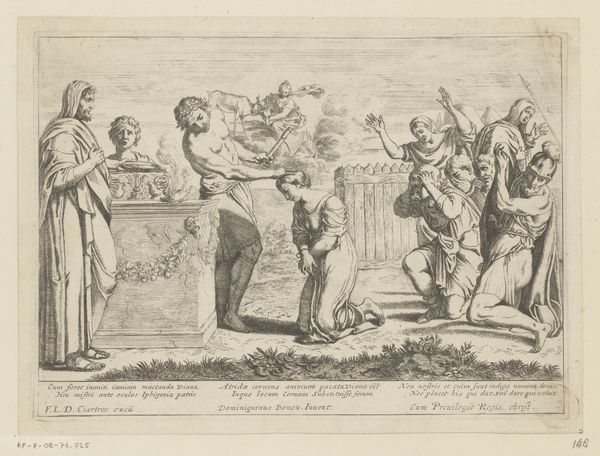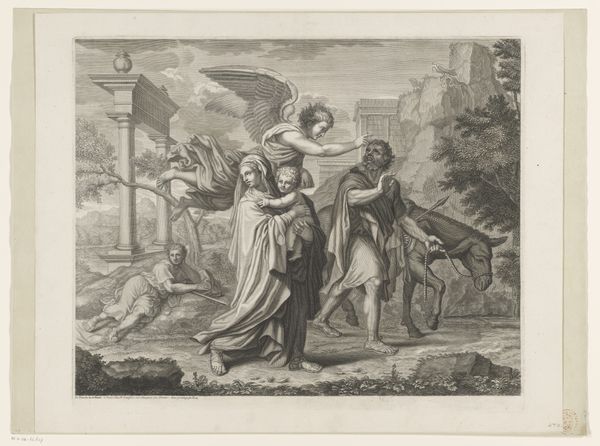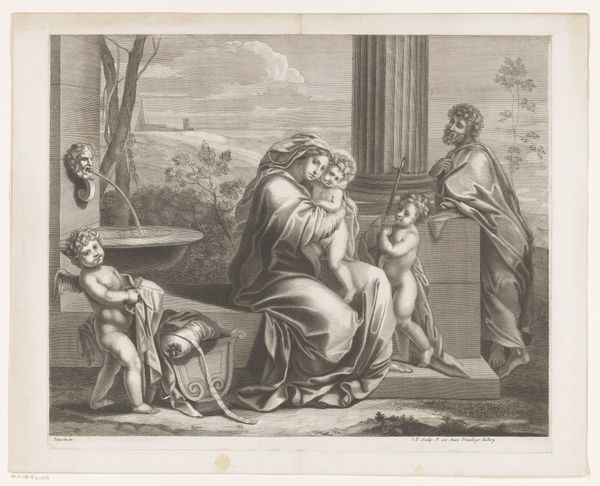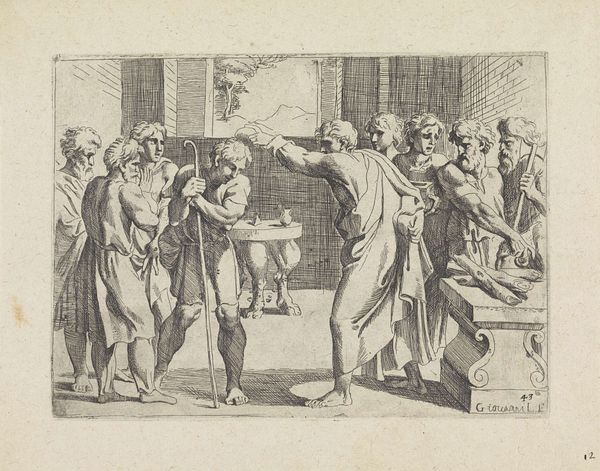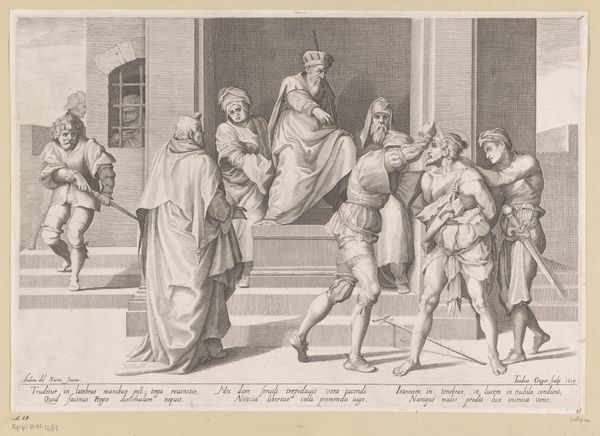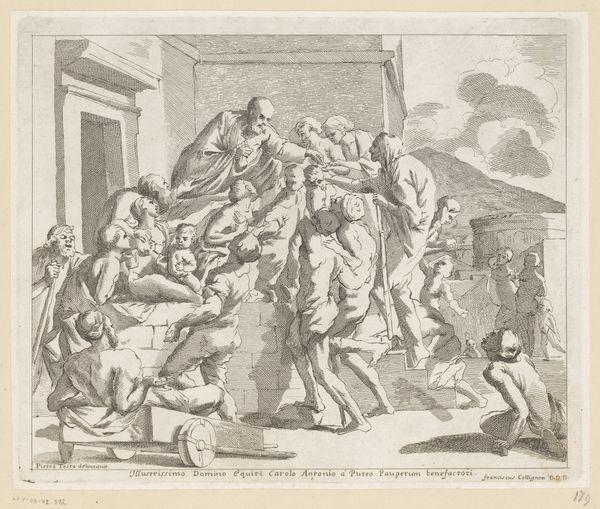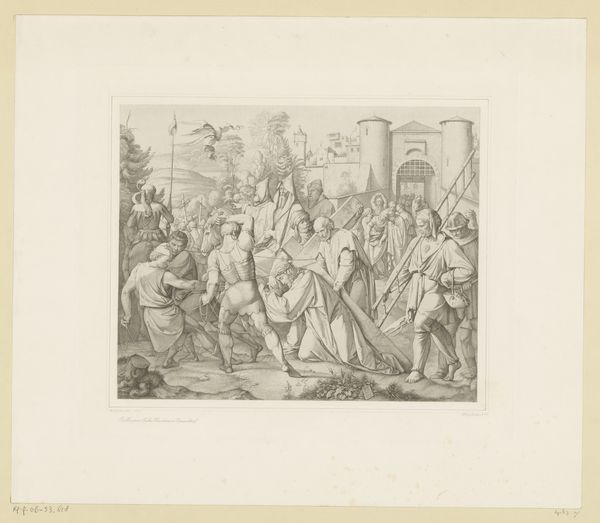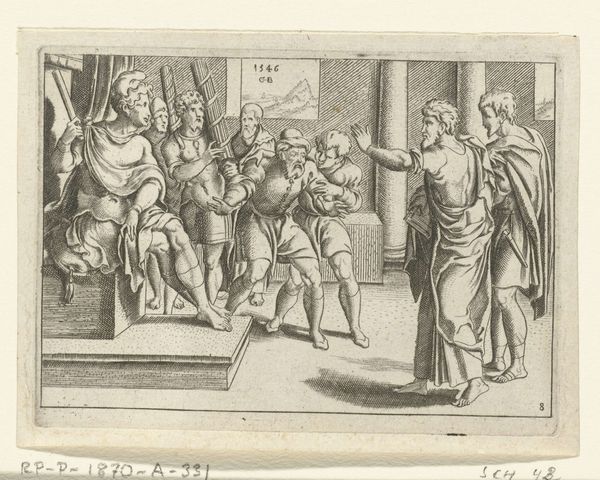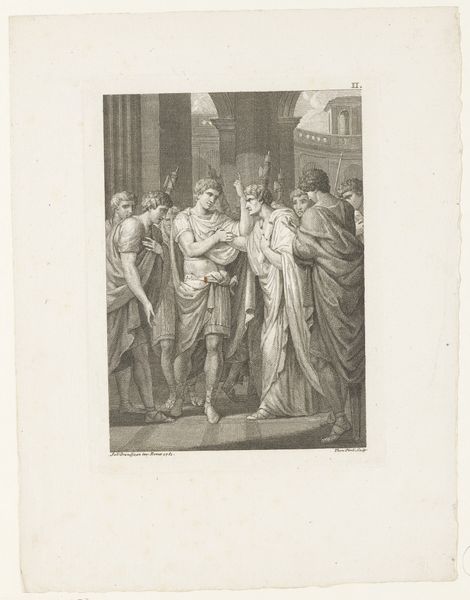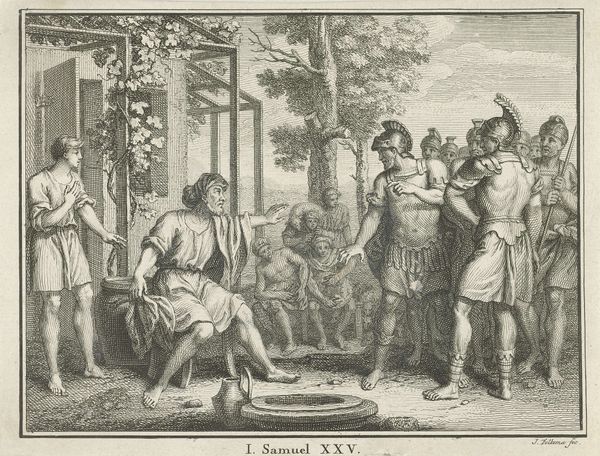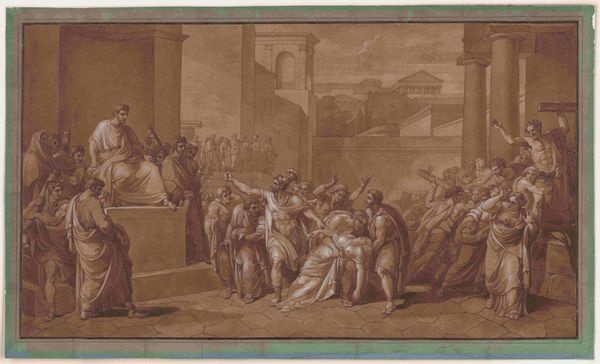
engraving
#
narrative-art
#
baroque
#
figuration
#
line
#
history-painting
#
engraving
Dimensions: height 149 mm, width 198 mm
Copyright: Rijks Museum: Open Domain
Curator: Louis Fabritius Dubourg's engraving, "The Return of the Prodigal Son," created in 1727, depicts a poignant biblical scene, currently held here at the Rijksmuseum. Editor: The visual harmony achieved through the calculated balance of figures really strikes me; it speaks volumes even before we consider its narrative content. But, to me it almost feels staged, a structured approach to the emotions within. Curator: I agree, the artist prioritizes clarity and structure. Notice how the use of line defines the contours of each figure, especially the father, accentuating his embracing gesture with a clear compositional focus, typical for the Baroque era. The medium of engraving itself allows for a high degree of control and detail. The labor to produce these lines is intensive! Editor: The material of engraving itself imposes certain restrictions; the need for sharp lines and defined shapes necessitates careful carving into the metal. Does that influence the emotional range being presented? The human component that went into production interests me more. This isn't paint thrown onto a canvas, but carved to represent form. Curator: An intriguing perspective. However, let us not underestimate the symbolism interwoven. The Prodigal Son's return is more than just a story; it's a testament to repentance and unconditional forgiveness. Consider also how Dubourg arranges the observers as witnesses to this reconciliation. The architecture functions as a stage for these familial issues. Editor: And think about what constitutes a “son.” Was it a familial relationship that Dubourg represents, or also of one's duty as a servant under a feudal regime? Curator: Certainly, social frameworks shape how we read the familial structure, however, Dubourg maintains a delicate balance, encouraging multiple interpretations rooted in narrative art tradition. Editor: Yes, and acknowledging those complexities expands how we experience this work on different levels, right? Curator: Indeed. Recognizing artistic and social aspects makes viewing art a fascinating engagement, which ultimately shows the brilliance and depth that Dubourg offers.
Comments
No comments
Be the first to comment and join the conversation on the ultimate creative platform.
